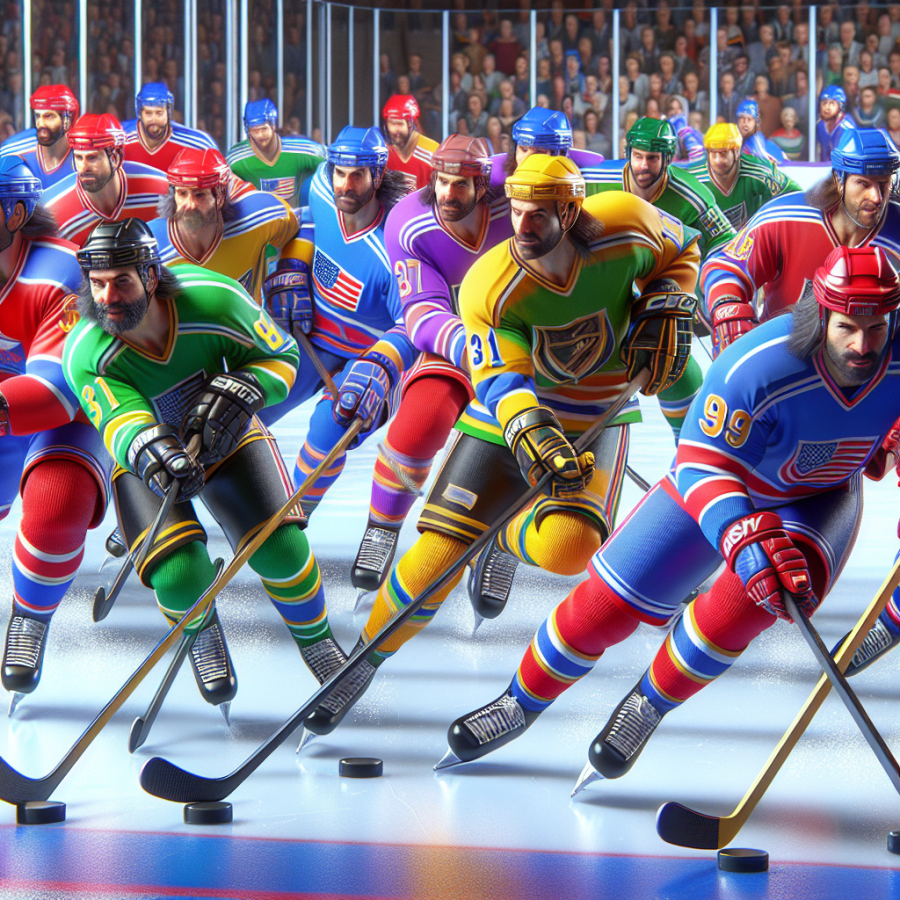Forging a Transnational Bond: The Journey of Team Europe in International Hockey
The notion of Team Europe in international hockey is relatively new when compared to the storied histories of national teams like Canada, Sweden, or Russia, who have long dominated the sport on an international level. As a collective, Team Europe represents a unification of talent across multiple countries, mainly European nations that do not have the same depth of hockey resources as the traditional powerhouses.
This transnational team's journey began notably at the 2016 World Cup of Hockey, where players from eight nations outside of the "Big Six" (Canada, Czech Republic, Finland, Russia, Sweden, and the United States) came together. The creation of Team Europe was initially met with skepticism from hockey purists, who questioned the idea of blending various nationalities and playing styles into a cohesive unit. Despite this, the players embraced the concept, recognizing a unique opportunity to showcase their skills on a grand stage and to compete at an elite level that some might not have had a chance to experience individually.
Team Europe’s roster includes a mix of veterans and young talent from countries such as Germany, Switzerland, Denmark, and Slovakia. These players bring a diverse set of tactics, training styles, and experiences from their respective national and club leagues. It is this diversity that has been the very foundation of Team Europe's identity, both challenging and strengthening the team as they have learned to blend their skills and backgrounds into a unified playing style.
The coaching and management staff faced a significant challenge: to take these individual players, who were more accustomed to playing against each other, and foster a sense of common purpose and teamwork. They approached this by emphasizing the shared goal and finding commonalities in their different playing styles, an approach that paid dividends during the World Cup as Team Europe advanced to the finals against powerhouse Team Canada.
On-ice strategies had to be carefully formulated to ensure that the players could find a common language, despite the variety in their training and playing philosophies. The coaches implemented systems that were broad enough to accommodate different skill sets but specific enough to challenge the traditional teams with a creative and unpredictable style of play.
Off the ice, forging a transnational bond meant cultivating camaraderie among players. Dinners, team meetings, and activities away from the rink became crucial in knitting together the fabric of the team. Language barriers and cultural differences took a backseat to the shared passion for hockey and the pride in representing Europe as a united front.
Read also:
A Kick into History: The Early Beginnings of Soccer
From Rink Rivalries to Continental Cohesion: How Team Europe is Changing the Face of Hockey
As the puck slides across the ice, it not only connects players within games but also has the power to bind nations within the sport. The inception of Team Europe is a testament to that very phenomenon. A melting pot of diverse hockey talents from various European countries who don’t have the population to compete alone at the highest level, this team offers a different narrative in a landscape traditionally dominated by powerhouse nations like Canada, the United States, Russia, and Sweden.
European hockey has always enjoyed a fervent fan base and a rich history, but now it’s being redefined through this continental collaboration. Players from nations such as Switzerland, Slovakia, Germany, and Denmark, which have traditionally had less representation in premier events, are now given a chance to shine on a grander stage. It’s a revelation for these athletes who now have a tangible opportunity to play against top-tier competition, and for some, to introduce themselves to the larger hockey community.
What Team Europe brings to the ice is a hybrid style of play. North American audiences are accustomed to an aggressive, physical game, while Europeans often emphasize skill, agility, and tactical play. Each of these athletes from various corners of Europe brings their home country’s unique style and strategy, culminating in a distinctive brand of hockey that is not just novel but also highly effective. This blend of playstyles has proven to be a formidable challenge for traditional teams at international competitions like the World Cup of Hockey.
Moreover, the success of Team Europe is fostering greater unity and camaraderie among European nations off the ice. The sense of a shared purpose has the potential to break down rivalries and old animosities, paving the way for a more integrated and harmonious European hockey community. Tournaments featuring Team Europe encourage conversation and partnerships among European national leagues—something that can only strengthen the sport in the long term. It showcases the untapped potential of nations together and creates a spirit of cooperation that transcends national borders.
This coming-together holds more significance than merely changing the competitive landscape; it has implications for youth development as well. With the rise of Team Europe, young athletes across the continent can dream of playing at premier events regardless of their nationality. It opens up pathways for development and exposes burgeoning talents to a level of competition they might not otherwise experience. This development holds promise for the growth of the talent pool, ultimately benefiting the sport as a whole.




